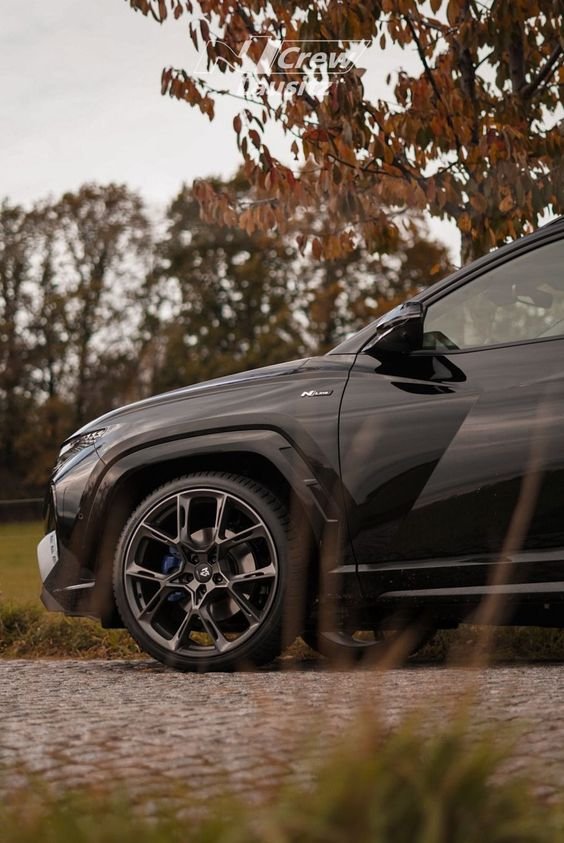
Selling your car can be a daunting task, but with the right strategy, you can maximize its value and ensure a smooth transaction. Whether you’re upgrading to a new vehicle or simply looking to cash in on your current one, this comprehensive guide will provide you with step-by-step instructions to help you get the most money for your car. We’ll cover everything from preparing your car for sale to negotiating with potential buyers and completing the transaction.
1. Preparing Your Car: Make It Shine
First impressions matter. To sell your car for maximum value, you need to present it in the best possible condition. The more attractive and well-maintained your car appears, the more likely you are to get top dollar for it.
A. Clean Your Car Thoroughly
- Exterior Cleaning: Wash the car thoroughly, including the body, windows, tires, and wheels. Consider waxing the exterior to give it a shiny finish. Pay special attention to any areas with dirt or grime buildup, like the wheel wells and undercarriage.
- Interior Cleaning: Vacuum the seats, carpets, and floor mats. Clean all surfaces, including the dashboard, center console, and door panels. Remove any stains or odors. Use a specialized cleaner for leather or fabric seats to restore them to their best condition.
- Engine Bay Cleaning: A clean engine bay can create a strong impression of a well-maintained vehicle. Carefully wipe down the engine components and remove any dust, oil, or grime.
B. Make Minor Repairs
- Fix Small Issues: Address minor problems that could detract from the car’s value, such as replacing burned-out bulbs, fixing small dents or scratches, and repairing any chips in the windshield.
- Check Tires and Brakes: Ensure the tires are properly inflated and have sufficient tread. Consider replacing worn-out tires or brake pads, as buyers often use these as bargaining points.
- Top Off Fluids: Check and top off all essential fluids, including oil, coolant, brake fluid, and windshield washer fluid. This shows that the car has been well-maintained.
C. Gather Maintenance Records
Organize all the service records and receipts for any maintenance or repairs you’ve had done on the car. A documented service history can significantly increase the car’s perceived value, as it assures potential buyers that the car has been well taken care of.
D. Obtain a Vehicle History Report
Purchase a vehicle history report from a service like Carfax or AutoCheck. This report will provide potential buyers with valuable information about your car’s history, including accidents, title status, and odometer readings. Having this report ready can build trust and make buyers more comfortable with the asking price.
2. Determine Your Car’s Market Value: Set the Right Price
Setting the right price is crucial to attracting serious buyers and maximizing your car’s value. Price it too high, and you may scare off potential buyers; price it too low, and you risk leaving money on the table.
A. Research Comparable Listings
- Check Online Marketplaces: Look at listings for similar cars on websites like Kelley Blue Book, Edmunds, Autotrader, and Craigslist. Pay attention to the make, model, year, mileage, condition, and any unique features. This will give you a sense of the current market value for your car.
- Compare Private Party and Dealer Prices: Understand that dealer prices may be higher due to overhead costs and warranties, while private party prices may be lower. Aim for a price that’s competitive in the private party market.
B. Consider Your Car’s Condition and Mileage
The condition and mileage of your car will significantly impact its value:
- Condition: Be honest about your car’s condition. If it’s in excellent shape with no major issues, you can price it at the higher end of the range. If it has noticeable wear and tear or mechanical problems, you may need to adjust your price accordingly.
- Mileage: Generally, the lower the mileage, the higher the value. Compare your car’s mileage with similar models to see if you should price it higher or lower within the range.
C. Factor in Upgrades and Extras
Consider any aftermarket upgrades or extras you’ve added to your car, such as a premium sound system, new tires, or custom rims. While not all modifications add value, some can be appealing to certain buyers and allow you to set a higher asking price.
D. Use Pricing Tools and Guides
Use online pricing tools like Kelley Blue Book (KBB) or Edmunds to determine a fair market value for your car. These tools consider factors such as location, condition, mileage, and demand, providing a suggested price range.
E. Set a Competitive Asking Price
Once you’ve researched and determined a fair value, set your asking price slightly above what you expect to get. This gives you room to negotiate while still attracting buyers. However, avoid overpricing, as this can deter potential buyers and prolong the sale.
3. Decide Where to Sell: Choose the Best Selling Platform
The platform you choose to sell your car can greatly impact how quickly it sells and the price you get. Here are the most common options:
A. Sell Privately
Selling your car privately often yields the highest return, as you avoid dealership fees and can negotiate directly with buyers. However, it requires more effort, including advertising, meeting with potential buyers, and handling paperwork.
- Online Classifieds: Websites like Craigslist, Facebook Marketplace, and Autotrader are popular for selling cars privately. They allow you to reach a large audience and provide detailed information and photos.
- Local Listings: Consider listing your car in local newspapers, community boards, or neighborhood apps like Nextdoor to attract buyers in your area.
B. Trade-In at a Dealership
Trading in your car at a dealership is convenient and can save time. However, dealerships typically offer less money for trade-ins than you would get from a private sale. This is because they need to make a profit when reselling your car.
- Get Multiple Offers: Visit several dealerships to get trade-in quotes. You can use these quotes as leverage to negotiate a better price.
- Consider Convenience: If you need to sell your car quickly or don’t want to deal with the hassle of a private sale, a trade-in might be the best option.
C. Sell to a Car Buying Service
Car buying services like CarMax, Vroom, or Carvana offer quick and straightforward sales. You can usually get an offer within minutes, and they handle all the paperwork. However, like dealerships, they may offer less money than you could get from a private sale.
- Evaluate the Offer: Obtain an offer from a car buying service and compare it to other options. If the convenience outweighs the difference in price, it might be worth considering.
- Check for Hidden Fees: Be aware of any fees that may reduce the amount you receive.
D. Consider Auction or Consignment Sales
- Auction Sales: Selling your car through an auction, like eBay Motors or a local auction house, can help you reach a broader audience. However, auction sales can be unpredictable, and you may not always get the price you want.
- Consignment Sales: Some dealerships and specialty car lots offer consignment sales, where they sell your car on your behalf for a fee or percentage of the sale price. This can be a good option if you don’t want to handle the sale yourself.
4. Create a Compelling Listing: Attract Potential Buyers
A well-crafted listing can make a significant difference in how quickly you sell your car and the price you get. Make sure your listing stands out by providing detailed information and high-quality photos.
A. Write a Detailed Description
- Include Key Information: Provide all essential details, such as the make, model, year, mileage, color, transmission type, and condition. Mention any recent maintenance, upgrades, or repairs, as well as any unique features or selling points.
- Highlight Benefits: Emphasize what makes your car stand out. For example, mention if it’s fuel-efficient, has low mileage, or has a clean title. If it has any desirable features like a sunroof, leather seats, or advanced safety features, be sure to highlight them.
- Be Honest: Transparency builds trust. Disclose any known issues or cosmetic flaws. Being upfront about the car’s condition will help you avoid disputes later and attract serious buyers.
B. Take High-Quality Photos
- Clean the Car First: Ensure your car is clean inside and out before taking photos. A well-presented car is more likely to attract buyers.
- Take Multiple Photos: Capture multiple angles, including the front, rear, sides, and interior. Also, include close-ups of important features like the dashboard, tires, and engine bay.
- Use Good Lighting: Take photos in good natural light to avoid shadows and glare. Choose a neutral background to make the car stand out.
C. Be Responsive to Inquiries
- Respond Promptly: Reply to inquiries as soon as possible to keep potential buyers engaged. Be polite and provide any additional information they may request.
- Be Ready for Test Drives: Have a plan for handling test drives, including a safe location and any necessary documentation, such as proof of insurance. Always accompany potential buyers during the test drive for safety reasons.
5. Negotiate the Sale: Get the Best Price
Negotiation is a crucial step in selling your car for maximum value. Approach this process with confidence, patience, and flexibility.
A. Know Your Bottom Line
- Set a Minimum Price: Before negotiations begin, decide on the minimum amount you’re willing to accept. This gives you a clear boundary and helps you negotiate with confidence.
- Be Prepared to Justify Your Price: Use the research you conducted earlier to justify your asking price. Point out the car’s condition, features, and market value to support your position.
B. Be Polite and Firm
- Stay Calm and Polite: Keep the negotiation friendly and professional. Be firm about your price, but also be open to reasonable offers.
- Don’t Rush: Take your time and don’t feel pressured to accept the first offer. If a buyer is serious, they will negotiate.
C. Use Tactics to Your Advantage
- Leverage Interest from Multiple Buyers: If you have multiple interested buyers, use this as leverage to negotiate a better price. Let them know there are other offers on the table.
- Negotiate in Person: Face-to-face negotiations can be more effective than email or phone. You can read the buyer’s body language and build rapport, which may help you achieve a better outcome.
6. Complete the Sale: Handle Paperwork and Payments
Once you’ve agreed on a price, it’s time to finalize the sale and ensure all paperwork is in order.
A. Gather Necessary Documents
- Title: The car’s title is the most critical document. Ensure it’s in your name and has no liens. Sign the title over to the new owner according to your state’s regulations.
- Bill of Sale: A bill of sale provides a record of the transaction and includes details such as the car’s make, model, VIN, sale price, and the names and signatures of both parties.
- Release of Liability: This document notifies the Department of Motor Vehicles (DMV) that you are no longer responsible for the vehicle. This is essential to avoid any future liability.
B. Arrange Secure Payment
- Accept Safe Payment Methods: Prefer secure payment methods such as a cashier’s check, money order, or bank transfer. Avoid personal checks unless you can verify the buyer’s funds.
- Meet at a Safe Location: Conduct the transaction in a safe, public place, like a bank or a well-populated area, to ensure safety and security.
C. Cancel Insurance and Remove Plates
- Cancel Your Insurance: Contact your insurance company to cancel your coverage as soon as the sale is finalized.
- Remove License Plates: In some states, you need to remove your license plates before handing over the car. Check your local regulations.
7. Post-Sale Follow-Up: Ensure Everything is Completed
After the sale, there are a few final steps to complete the process:
A. Confirm Transfer of Ownership
Ensure the new owner has registered the car in their name and that the DMV has been notified of the ownership transfer. This step protects you from future liabilities.
B. Keep a Copy of All Documents
Keep copies of all documents related to the sale, including the bill of sale, release of liability, and any correspondence with the buyer. These records can be useful in case of disputes or legal issues.
Conclusion
Selling your car for maximum value requires careful preparation, pricing, and negotiation. By taking the time to clean and repair your car, researching the market, creating a compelling listing, and choosing the right platform, you can attract serious buyers and negotiate the best price. Follow up with proper paperwork and payment methods to ensure a smooth and secure transaction. With these strategies, you’ll be well-equipped to sell your car quickly and for the best possible price.







